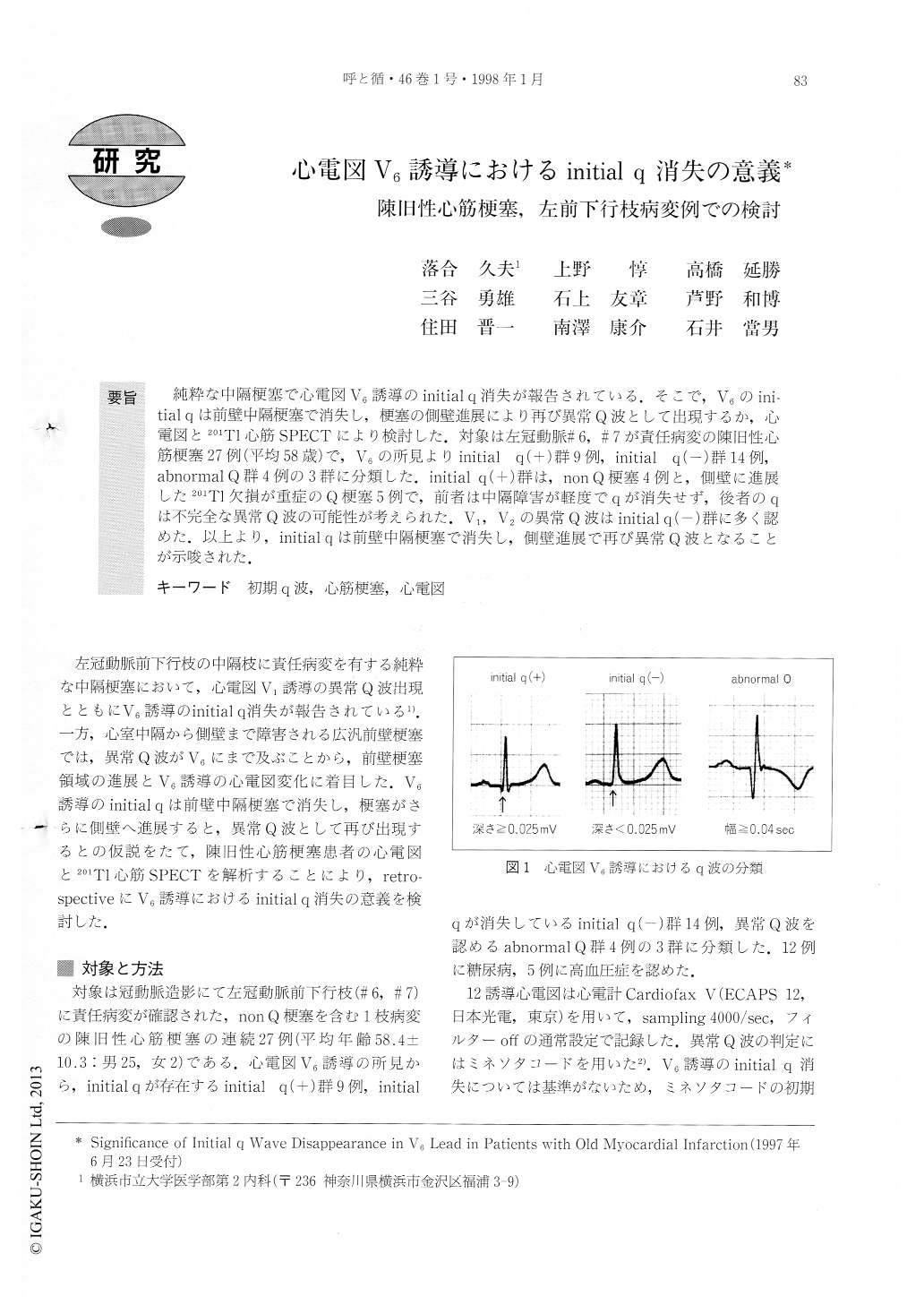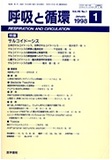Japanese
English
- 有料閲覧
- Abstract 文献概要
- 1ページ目 Look Inside
純粋な中隔梗塞で心電図V6誘導のinitial q消失が報告されている.そこで,V6のini—tial qは前壁中隔梗塞で消失し,梗塞の側壁進展により再び異常Q波として出現するか,心電図と201T1心筋SPECTにより検討した.対象は左冠動脈#6,#7が責任病変の陳旧性心筋梗塞27例(平均58歳)で,V6の所見よりinitial q(+)群9例,initial q(−)群14例,abnormal Q群4例の3群に分類した.initial q(+)群は,non Q梗塞4例と,側壁に進展した201Tl欠損が重症のQ梗塞5例で,前者は中隔障害が軽度でqが消失せず,後者のqは不完全な異常Q波の可能性が考えられた.V1,V2の異常Q波はinitial q(−)群に多く認めた.以上より,initial qは前壁中隔梗塞で消失し,側壁進展で再び異常Q波となることが示唆された.
Electrocardiography has been used as a standard method for diagnosing myocardial infarction (MI) in clinical practice, but significance of an initial q wave in V6, lead remains to be known. To evaluate the diagnos-tic implication of initial q wave disappearance in V6 lead, 12-lead electrocardiography and T1-201 scintigra-phy were performed in 27 patients (25 males and 2 females, mean age 58 years) with an infarcted proximal or middle left anterior descending artery. Of these sub-jects, initial q waves in V6 lead were retained in 9, lost in 14, and abnormal Q waves were found in 4. There were no significant differences in the extent of perfusion defect among the three groups. In the group retaining initial q waves, the subjects were divided into two subgroups according to abnormal Q waves : i. e., either 4 non-Q wave MI, or 5 Q wave MI. A significant difference existed in the severity of perfusion defect between the two subgroups (non-Q MI 0.31 ±0.32 vs Q MI 0.78 ± 0.52, p =0.01). All patients with Q MI in this subgroup had abnormal Q waves in I/aVL leads, suggest-ing that their initial q waves in V6 lead don't derive from septa] q waves but from incomplete abnormal Q waves. Between the groups retaining and losing initial q waves, the prevalence of abnormal Q waves in I/aVL lead were more (56% vs 7%, p =0.01) and those in V1/V2 lead were less (33%vs 86%, p = 0.01) in the former than in the latter. In the group having abnormal Q waves in V6 lead, there were 3 broad anterior MI and 1 inferior MI with superdominant left anterior descending artery. Our findings suggest that an initial q waves in V6 lead are retained in mild non-Q MI, disappear in localized anter-oseptal MI, and appear again as an abnormal Q wave in broad anterior MI.

Copyright © 1998, Igaku-Shoin Ltd. All rights reserved.


